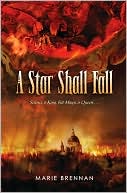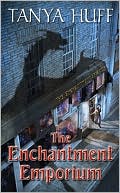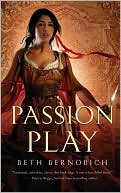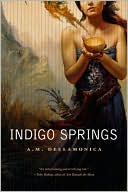Midlist Bestseller
Reminder – tomorrow is the last day to enter to win books by Tanya Huff and Marie Brennan!
#
Joshua (my agent) e-mailed me after Monday’s blog post to tell me I should really stop calling myself a midlist author. Personally, I’d rather call myself Segway Ninja and Tribble Juggler Jim C. Hines. But his e-mail got me thinking, and I realized I don’t even know what “midlist” means.
 Oh, I know the term originates from publishers’ catalogs. The Big Names are there at the front of the list. Older and poorly-performing books get tucked away in back. The rest get tossed somewhere in the middle of the list, ergo midlist.
Oh, I know the term originates from publishers’ catalogs. The Big Names are there at the front of the list. Older and poorly-performing books get tucked away in back. The rest get tossed somewhere in the middle of the list, ergo midlist.
Years ago, I remember Elizabeth Bear commenting that to be a midlist author, you have to have five books in print. This isn’t an official Law of Publishing or anything, but it stuck with me. Getting my fifth book into print was a nice little milestone.
But am I a midlist author now? I have six books in print, so maybe I’m upper midlist? Lower frontlist?
Joshua said my sales continue to improve and my backlist is selling well, and these things propel me past midlist status. Maybe I should start calling myself a Future Frontlist Author?
It was also pointed out that, at certain publishers which will remain anonymous, the fact that I’ve made the Locus bestseller list with my past four books would get me billed not as a midlister, but as National Bestselling Author Jim C. Hines.
Pardon me while I choke on my Diet Cherry Pepsi.
I know this much: I’m not about to start slapping “Bestselling Author” onto my business cards. While technically true, it feels deceptive. Like certain self-published authors who make it into the top 10 of some obscure Amazon subcategory and immediately dub themselves “Bestselling Author Spock T. Pizzatrousers” or whatever.
In some ways, this is pointless navel-gazing. Who cares what I call myself, as long as I keep writing, selling, and enjoying it? But the discussion brought something into focus: in certain respects, midlist feels like a relative term, a comparison of your own success to that of other authors … and I have no clue where I fall on that continuum.
I know I’m not selling like Gaiman or Rowling or Harris, or any of those NYT Bestselling authors. But that only tells me I’m not in the very top percentile. Am I in the top ten percent? Twenty? At least in the upper half?
Again, in some respects, it doesn’t matter. I’m not trying to compete with my peers (except maybe that Anton Strout fellow), and as long as DAW keeps buying my books, I’m happy. But I feel like I’m in the dark here. If I’m future-lower-front-and-slightly-off-center list, should I be pushing for larger advances or better/bigger deals? How confident should I be in my long-term career?
It reminds me of karate. In Sanchin-Ryu, I’ve never been told what the requirements are for any given rank. I had to teach myself not to worry about it, and to just concentrate on improving. Let my sensei decide when I’m ready for the next rank. But then, I’m not trying to make a career out of Sanchin-Ryu…
What do you think midlist really means? Who do you think of as midlist authors? And for the published authors, am I the only one who feels clueless about how successful (or not) I really am?









 I decided to experiment. I’ve taken my mainstream novel Goldfish Dreams and have released it in
I decided to experiment. I’ve taken my mainstream novel Goldfish Dreams and have released it in  After a few years of figuring out what the hell I was doing, I had a finished novel: Rosemary and Rue
After a few years of figuring out what the hell I was doing, I had a finished novel: Rosemary and Rue 

 2.
2.  One of the coolest things about my first-novel journey was that Irene Gallo had spotted this amazing Julie Bell painting and liked it so much she went looking to see if any of their editors might want it for a particular project. Jim pounced on it immediately. He sent an electronic copy to me the week we finalized the deal, with a note that said something like, “If you don’t like it, we’ll get something else.” But I loved it! It is not only a beautiful painting, it’s very appropriate.
One of the coolest things about my first-novel journey was that Irene Gallo had spotted this amazing Julie Bell painting and liked it so much she went looking to see if any of their editors might want it for a particular project. Jim pounced on it immediately. He sent an electronic copy to me the week we finalized the deal, with a note that said something like, “If you don’t like it, we’ll get something else.” But I loved it! It is not only a beautiful painting, it’s very appropriate.